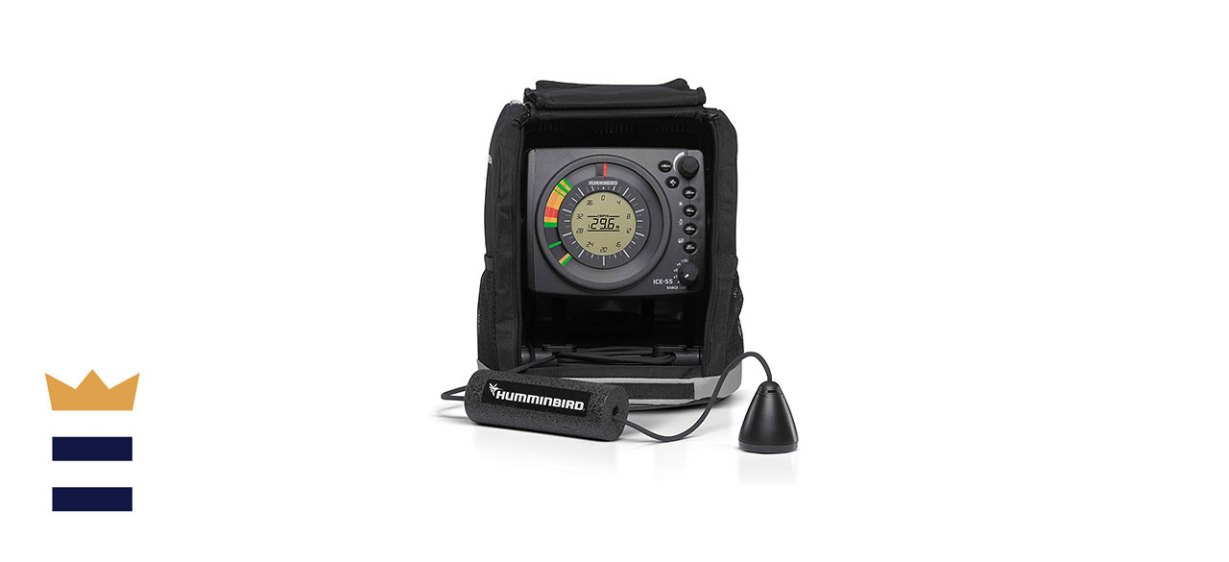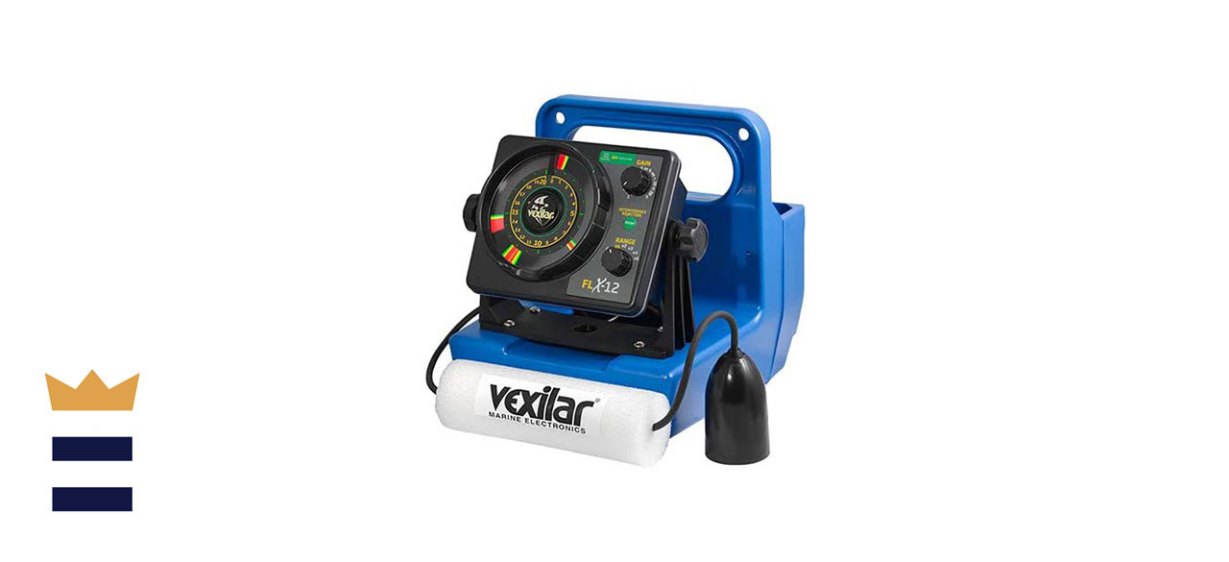Which ice fishing flasher is best?
When you’re fishing through solid ice, it can be nearly impossible to see what’s happening in the water. That’s why novice and experienced ice anglers alike use ice fishing flashers, which have a display screen that lets you detect fish and other underwater objects. The Humminbird Ice-55 Six Color Flasher is the top pick because it’s portable, easy to use and can automatically detect water depth.
What to know before you buy an ice fishing flasher
What an ice fishing flasher is
Ice fishing flashers, sometimes known as fish finders, aren’t required for ice fishing, but they can make it much easier and more productive. They use sonar to detect objects beneath the water’s surface. The sonar beam is also known as the “cone” because its shape widens as the water depth increases.
Ice fishing flashers vs. fish finders
Although the terms are sometimes used interchangeably, ice fishing flashers and fish finders are actually two distinct items. They both use sonar technology, but ice fishing flashers are designed to detect fish in a stationary, vertical column of water. Fish finders are often attached to boats, can detect fish at a much greater depth and typically provide more comprehensive information.
Using an ice fishing flasher
The part of the flasher that sends out the sonar beam is known as the transducer. The flasher also has a display screen that shows the presence of underwater objects using colorful bars of light. A green bar typically indicates small objects or vegetation, while a red or yellow bar indicates a nearby fish. If an object on the display starts green and becomes yellow or red, that means that a fish is coming closer to the center of the cone.
In most cases, you can also see your lure on the display in yellow or green. If the fish and the lure merge into a single thick bar, you may have a bite.
What to look for in a quality ice fishing flasher
Display
Most ice fishing flashers use a LCD panel to show depth and display underwater objects. Look for a device with a large, bright screen so you can view readings in all weather and light conditions.
Cone angle
The cone angle determines the width of your flasher’s sonar beam. Although it may seem that a wide cone angle would be better for detecting more fish, there are situations where you’ll need the precision of a narrower beam. Look for a device that lets you switch between narrow and wide sonar beams.
Portability
Ice fishing flashers can be fairly clunky and heavy, so look for a model that comes with a protective carrying case. Since you never know how the weather might change while you’re on the ice, the case also should be waterproof or weather-resistant. On the other hand, many flashers are designed to fit perfectly inside a five-gallon bucket, an accessory used by most ice anglers.
Instructions
If you’re unfamiliar with ice fishing flashers, all of the technical details might make your head spin. Look for a device that includes detailed instructions or even a video walkthrough to help you learn.
How much you can expect to spend on an ice fishing flasher
The cost usually depends on its durability, battery life and features such as adjustable depth and screen quality. Most anglers can expect to spend around $300-$600 for a dependable flasher.
Ice fishing flasher FAQ
Are ice fishing flashers easy to use?
A. Once you get used to reading the display screen, they are quite simple to operate. That being said, always read the instructions before hitting the ice.
What’s the difference between cover and structure?
A. In ice fishing lingo, cover refers to underwater objects such as vegetation and fallen logs, while structure refers to the unchanging characteristics of the body of water itself. A rise or dip in the lake bed is an example of structure.
What’s the best ice fishing flasher to buy?
Top ice fishing flasher
Humminbird Ice-55 Six Color Flasher
What you need to know: This popular flasher comes with a large display screen, carrying case and loads of high-tech features.
What you’ll love: Made in the United States, it has dual beam sonar so you can switch between a wide and narrow beam, and you can adjust your depth range manually or set the flasher to adjust automatically.
What you should consider: Some anglers received a flasher with a defective charger.
Where to buy: Sold by Amazon
Top ice fishing flasher for the money
Vexilar FLX-12 Genz Pack With 12 Ice-Ducer
What you need to know: This affordable device is easy to use with versatile settings for all ice fishing situations.
What you’ll love: The battery-powered flasher comes with five depth range settings and a bright display screen for low-light conditions. The built-in handle makes it easy to carry, and there is a low-power mode for saving battery life.
What you should consider: It does not come with a protective carrying case.
Where to buy: Sold by Amazon
Worth checking out
Garmin Striker Plus 4 Ice Fishing Finder Bundle
What you need to know: Technically not an ice fishing flasher, this fish finder is nevertheless great for detecting fish under the ice.
What you’ll love: In addition to sonar, this ice fishing fish finder uses GPS technology to detect underwater objects and records them so you can return to fishing spots in the future. The durable carrying case has ample room for accessories.
What you should consider: A few reviewers wished the display screen were easier to read.
Where to buy: Sold by Amazon
Sign up here to receive the BestReviews weekly newsletter for useful advice on new products and noteworthy deals.
Patrick Farmer writes for BestReviews. BestReviews has helped millions of consumers simplify their purchasing decisions, saving them time and money.
Copyright 2022 BestReviews, a Nexstar company. All rights reserved.




